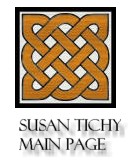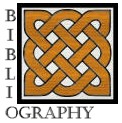ENG
LISH
660:
002
Modernist Women Poets:
Mina Loy, Marianne Moore, Lorine Niedecker
Mina
ing
20
05
GEO
RGE
MAS
ON
UNI
VER
SITY
Diction & Syntax in Loy's "Songs to Johannes"
Two elements of diction are most noticeable: the remarkable range of her vocabulary for the human body and its parts, and the mixing of dictions. She mixes “scientific” with “colloquial,” abstract with concrete, polysyllabic with monosyllabic, and Latinate with Anglo-Saxon. Peter Quartermain has pointed out that this mixing provides Loy with “irony without detachment” (Schreiber & Tuma, 80). This is important because it distances the voice at the same time that it allows the expression of emotion, sometimes directly. Judgment, passion, a sense of the absurd--all can coexist in the ranges of her diction. Another affect of this mixing and juxtaposition is that categories do not merge: the sexual body remains distinct from the rhetoric of romance, and the struggling “I” is unable to resolve conflicts by writing them out of existence in the form of a diction shift or lyrical conflation. Conflict remains embodied in the opposing tendencies of words.
It is also possible to read the juxtapositions of Loy’s diction in Freudian terms, as an alternation between associative imagery and compressed analytic thought. This reading is lightly suggested by Carolyn Burke in Becoming Modern in her chapters on Loy’s childhood.
Quartermain borrows Canadian poet Fred Wah’s term “para-syntax” to describe Loy’s manipulation of phrase-boundary & syntax (often resulting in “syntactic drift”), punctuation (and its lack), white space and line break. The global effect of this local manipulation is that many passages or episodes of “Songs to Johannes” are “double-voiced” -- that is, they can be read in at least two different (sometimes contradictory) ways. Quartermain connects this aspect of the text to the sequence’s opening (governing?) sections, whose “sheer comedy and bawdy hostility” prevent the opposing voices from neutralizing each other. Thus the poem never moves “toward the sort of conclusion binary oppositions customarily offer.” It remains “apositional” (81). This implies that a local strategy of indeterminacy has become structural, and has moved into the category of content.
In her essay "Love Is a Lyric / Of Bodies" (in MLWP) Maeera Shreiber argues that these strategies amount to “a radical distrust of the lyric subject.” Or do they redefine the lyric subject?
There is a
long-standing tradition which views the written page as continuous with
voice, a metonymic extension of the body. Indeed this claim is casually
licensed by such commonplaces as “the body of the text” or “the
writer’s voice.” A collage poetics violates these conventions. With its
emphasis on word as artifact, the aesthetic strategy of collage enacts
a severing of the link between the voice and the page, thus marking an
estranged relation of the subject and its body. Unlike Gertrude Stein,
who is interested in jagged juxtapositions and other forms of
linguistic “splicing” as a way not just of representing but of “causing
connections,” Loy wants to emphasize writing as a kind of activity
which aggravates states of separation. (87)
Collage in Loy generally does not involve quotation, as it does in Moore, but juxtaposes contrasting diction and imagery. One of the contrasts Shreiber brings to our attention is that between the eye’s experience of Loy’s text and the ear’s: the page looks fragmented, randomly spaced, ruptured; yet when we read the poems aloud we hear a more continuous, more melodic prosody. Shreiber asserts that this formal characteristic translates to a thematic emphasis on the written word’s tendency to signify and perpetuate separation, in contrast to the unifying presence of human speech.
To my reading, Shreiber overstates the case, attributing her own distinction between the written and spoken texts to Loy herself. Still, her analysis is suggestive of the ways certain aspects of form (and certain ways of reading) create or increase the level of abstraction in a poem. This looks forward to similar analyses of Marianne Moore’s stanza forms, in which eye and ear create vastly different readings of the same words.
Sexuality in Loy's Poems
Shreiber’s essay goes on to a thematic reading of “Love Songs” as a map of oppositions between language and intimacy -- specifically reproductive, creative intimacy -- and a rejection of poetry as compensatory. It is one of several attempts (reductive, in my opinion) to find a coherent “non-narrative narrative” in the sequence. In the same volume, Rachel Blau DuPlessis’ “’Seismic Orgasm’: Sexual Intercourse and Narrative Meaning in Mina Loy” constructs a thematic reading with a stronger historical ground. She places the “liberatory feminism” of the Love Songs in dialogue with specific Victorian and modern “reforming feminisms”, including the Social Purity movement and sexual radicals. She stresses that the poem’s mixture of dictions arises from a specific feminist critique of “a foundational cluster of materials about romance in poems,” a thesis she explores in the essay you will read next week, “Corpses of Poesy”. (52)
DuPlessis, by the way, does not read the poem as a poetic expression of ideas formulated in Loy’s “Feminist Manifesto” but as standing “in a contradictory relation to the manifesto” ...presumably because the manifesto is more mono-voiced than the poem. The same point is made by other critics, who note the relative optimism of Loy’s manifestos in comparison with the poems, which deal not with what might or ought to be but with the messy reality of what is. Of her own essay, DuPlessis says:
This brief account
identifies one main issue: Loy’s representation of sexuality...as a
complex of events and meanings, as a site of struggle among various
historically situated discourses. No human act is natural in an
unmediated way, and even the most apparently basic and primal (the
sexual act) has been constructed of historical and ideological
meanings. (64)
And:Loy’s satiric,
ironic, wickedly learned, and passionate voice goes far to destabilize
lyric assumptions about possession of the romance plot, female silence,
and objectification. Loy, a self-styled “feminist writer”, in or
alluding to the lyric of romance (“the best since Sappho”), and
situated at a historically mobile cusp of sexual issues--free love,
maternalism--faces these issues at their extreme.(64)
DuPlessis gives a quick tour of allusions to Sappho in “Love Songs.” She also places the sequence in relation to the carpe diem invitation. Loy creates, she says,
an excessive or
exaggerated attention to the one act hidden in the carpe diem
convention, although its constant point. She makes a new kind of gender
narrative, validated by historical struggles around sexual expression,
and female desire. By excess in a female voice, she swamps the
convention’s dependency on a certain delicacy, feminine resistance, or
reluctance. She overrides the poetic convention of romance both by a
sense of aggression (Carpe diem! you don’t even have to ask!) where she
represents herself continuously as a sexual woman, and by a sense of
judgment, where she represents her skeptical, damaging analysis of what
can happen after “achievement” of bliss or completion promised in the
convention of romance. (66)
DuPlessis goes on to contrast Loy’s Love Songs with D.H. Lawrence’s contemporary novel, Lady Chatterly’s Lover, and, more generally, to place Loy’s work in opposition to narrative structures predicated on (male) sexual tension and release. In Loy, narrative climax and sexual climax do not coincide.
In contrast,
Loy’s... representations of intercourse occur in a loosely structured
poetic plot of connection, loss, and analytic reprise; yet they are not
climactic, but various, acting to influence, and influenced by, the
mixture of suspicion and desire, the playing out of equations for
possibilities, which is constitutive of the sexuality depicted. (71)
Representation is the issue, DuPlessis argues, not conversion to a point of view. What in Lawrence is offered as a proof or solution, in Loy is presented as the problem itself.
Historical specifics of the sexual issues populating Loy’s poems are also framed in Janet Lyon’s “Mina Loy’s Pregnant Pauses: The Space Of Possibility in the Florence Writings” (MLWP) which discusses the “Feminist Manifesto,” “Love Songs,” “Parturition,” and some of Loy’s unpublished prose & drama.




